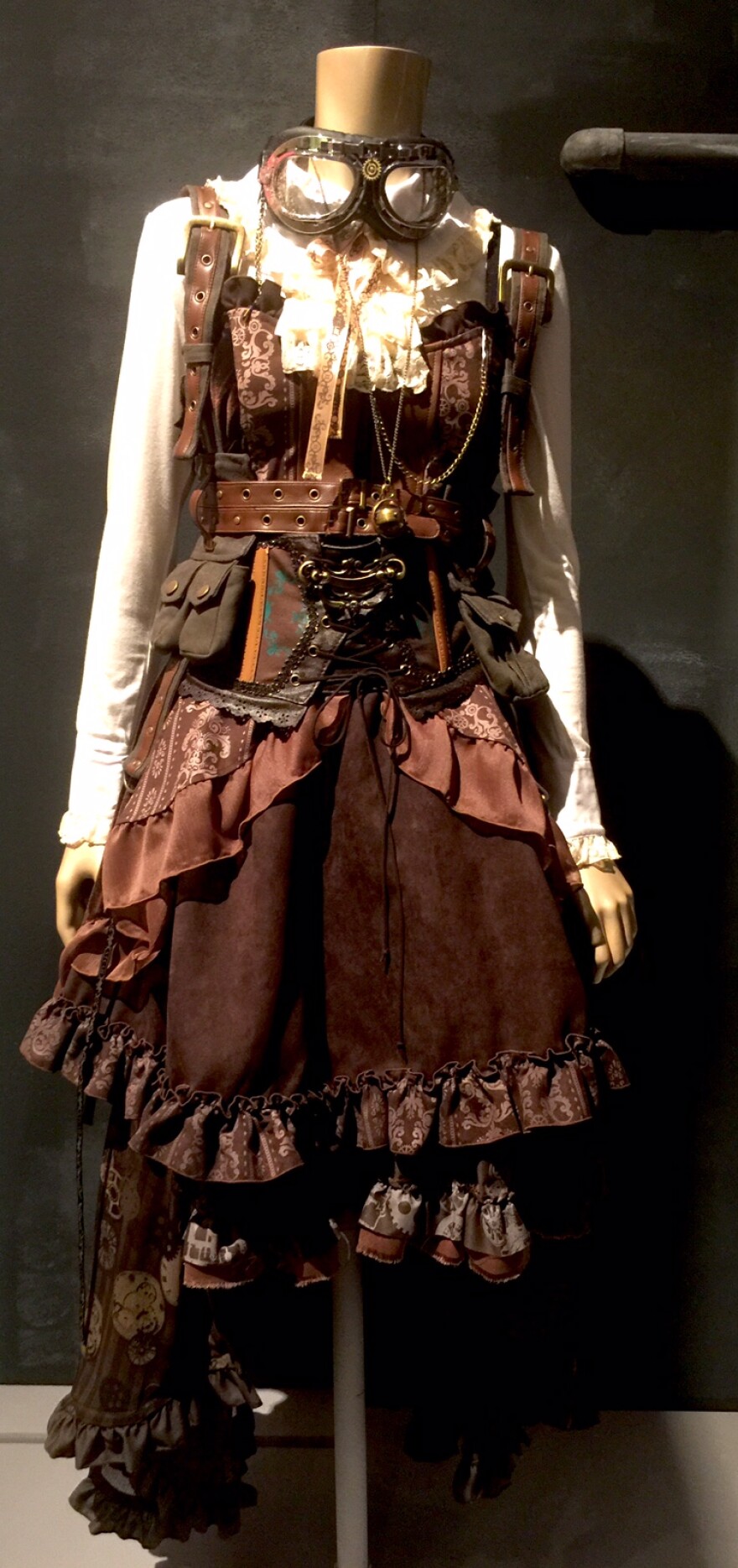
Harajuku, on the western side of metropolitan Tokyo, has been a base for Americans and other expats since World War II. Trendy Japanese flocked there, especially after the ’64 Olympics highlighted Harajuku’s unique style. HPR’sNoeTanigawa reports that for the last 20 years, fashion trends in Harajuku have enjoyed growing influence worldwide, and we can see them now at the Honolulu Museum.
Sara Oka, textile curator at the Honolulu museum of Art, says Tokyo street style, centered in the youth culture of the Harajuku area, began as very personal and handmade expression.
Shibuya, Osaka, and other parts of Japan are involved but Harajuku is arguably the epicenter where Japanese affection for Hello Kitty cuteness mashes up with British and American influences like Alice in Wonderland, My Little Pony, Glam Rock, Steam Punk, and Goth. Lolita is perhaps the most well known look from Harajuku, it involves pastels, petticoats, ribbons, lace, bows, bonnets, frilly umbrellas, and looking generally like a delicate doll. Offshoots include Sweet Lolita, Classic Lolita, Goth Lolita, Steam Punk Lolita and others like Kimo Kawaii, which embraces the creepy or grotesque. Think troll dolls, or darker, even.


“Harajuku: Tokyo Street Fashion” continues at the Honolulu Museum of Art through April 3rd.
More on the “Harajuku: Tokyo Street Fashion” show at the Honolulu Museum of Art.
Upcoming events include an appearance by model Misako Aoki. Misako Aoki is a model and president of the Japan Lolita Association. She is also a part-time nurse by trade but works her schedule to be part-time Lolita as well.
Jan 28, 10 a.m.-noon, in the exhibition, free with museum entry
ARTafterDARK: Kawaii Hawai‘i
Jan 29, 6-9pm, $25, free for museum members
Misako Aoki will be featured in the exhibition gallery for picture-taking with guests.
Lecture: An Nguyen: Eternal Maidens and The Power of Cute Fashion: From Conversations with Japanese Lolitas
Feb 25, 2016, 5-6 p.m., Doris Duke Theater, free.
Visiting scholar An Nguyen's talk focuses on the people who wear Lolita, with stories and profiles that shed light on why they choose to wear this fashion style through an exploration of philosophy, aesthetics, and social networks.
Bank of Hawaii Family Sunday
February 21, 2016 • 11-3 • Free
Mori girl and Steam boy
At this free family day focused on "Harajuku: Tokyo Street Fashion," the art and film will be all about anime and manga.
Connect here with J Fashion Hawai'i.
For more Japanese street fashion.

Where can Harajuku style go next? you may ask. Looking at the raw origins of Lolita, when things were so home/hand made and vintage acoutrements from odd sources were so prevalent, maybe Shimokitazawa in eastern Tokyo is a key to what's coming. There, designer resale pieces sit alongside vintage Japanese designers from the deconstructed period, next to American biker memorabilia, and much more. HMA textile curator, Sara Oka, put it best, noting, sometimes the odd and unexpected are really more fascinating to look at.






